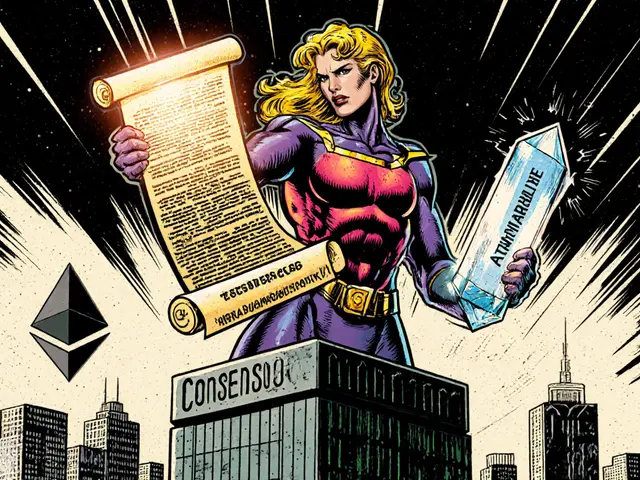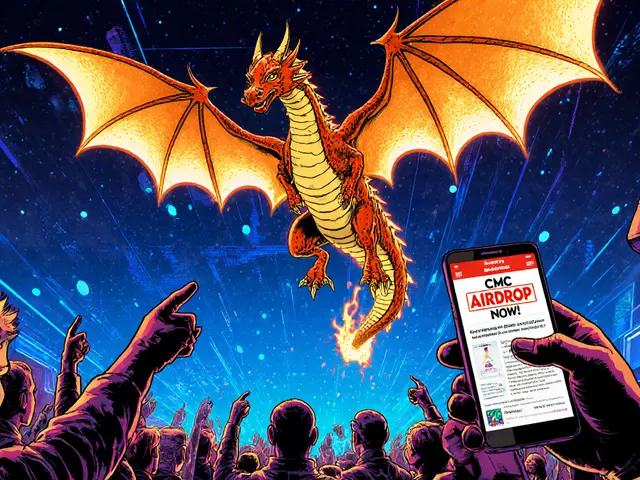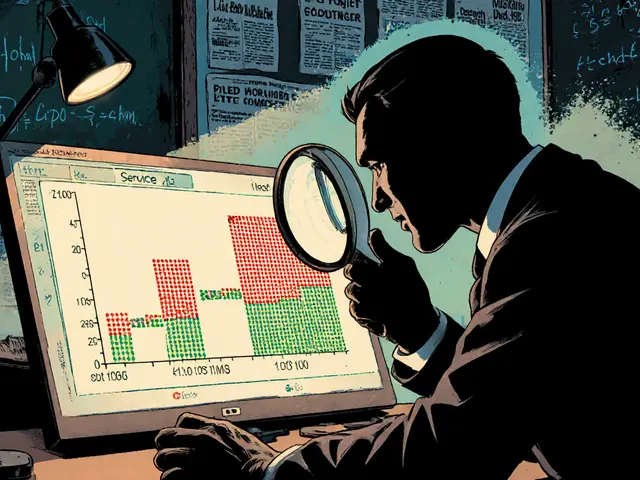
When Bitcoin first launched in 2009, mining a block was something you could do on a regular laptop. Today, it takes specialized hardware, massive electricity bills, and a deep understanding of how the network adjusts its own difficulty to keep things running. If you’ve ever wondered why Bitcoin blocks still take about 10 minutes to mine-even though thousands of times more computing power is on the network-that’s all thanks to mining difficulty. It’s not magic. It’s math. And it’s what keeps Bitcoin secure, predictable, and alive.
What Mining Difficulty Actually Is
Mining difficulty is a number that tells miners how hard it is to find a valid hash for a new block. Think of it like a puzzle. The network sets a target-a really big, random-looking number-and miners have to guess a value that, when hashed, produces a result lower than that target. The lower the target, the harder the puzzle. That’s what difficulty controls.When Bitcoin started, the difficulty was set to 1. That meant the target was as high as the protocol would allow, making it easy to solve. Today, the difficulty is over 80 billion. That doesn’t mean the puzzle is 80 billion times harder in a simple way-it means the target has been lowered so drastically that you need trillions of guesses per second just to have a shot.
This isn’t arbitrary. The system automatically adjusts difficulty every 2,016 blocks, which takes about two weeks under normal conditions. If blocks are being found too fast-say, in 8 minutes instead of 10-the network makes the puzzle harder. If they’re taking too long-like 12 minutes-it eases up. The goal is always the same: 10 minutes per block, no matter how many miners join or leave.
How the Math Works (Without the Confusion)
The formula looks scary, but it’s actually simple:Difficulty = Difficulty Target / Current Target
The Difficulty Target is fixed. It’s the original target from day one, when difficulty was 1. The Current Target is what the network calculates every 2,016 blocks based on how long it actually took to mine those blocks.
Here’s how it works step by step:
- Wait for 2,016 blocks to be mined.
- Add up how many minutes it took to mine them.
- Divide that total by 20,160 (which is 2,016 blocks × 10 minutes).
- Multiply the result by the current difficulty.
- That’s your new difficulty.
Example: If those 2,016 blocks took 18,000 minutes instead of 20,160, the network sees it’s too fast. The ratio is 18,000 / 20,160 = 0.89. That means blocks are coming 11% faster than intended. So the new difficulty becomes: Current Difficulty × (1 / 0.89) ≈ Current Difficulty × 1.12. Difficulty goes up by about 12%.
There’s a quirk, though. The original Bitcoin code was written to count the previous 2,015 blocks, not 2,016. That’s still in place today. It doesn’t break anything-it just means the adjustment is ever so slightly off. Most miners don’t even notice.
Why There’s a Cap on Difficulty Changes
You might think the network would adjust difficulty wildly if a bunch of miners suddenly shut down-or if a new wave of super-efficient ASICs floods the network. But it doesn’t. Bitcoin limits how much difficulty can change in one adjustment.Here’s the rule: difficulty can’t increase by more than 400% (4x) or drop by more than 75% (to 25% of its previous value). That’s intentional.
Imagine a scenario where half the miners quit overnight. Without a cap, difficulty could crash by 50%, and suddenly blocks are being mined every 5 minutes. That’s bad. It floods the network, creates chain reorganizations, and makes it easier for attackers to double-spend. The cap prevents panic swings.
On the flip side, if a huge mining farm with 50 exahashes of power suddenly joins, the network won’t instantly spike difficulty to match. It’ll take two weeks of gradual increases. That gives smaller miners time to react, upgrade, or exit without getting wiped out overnight.
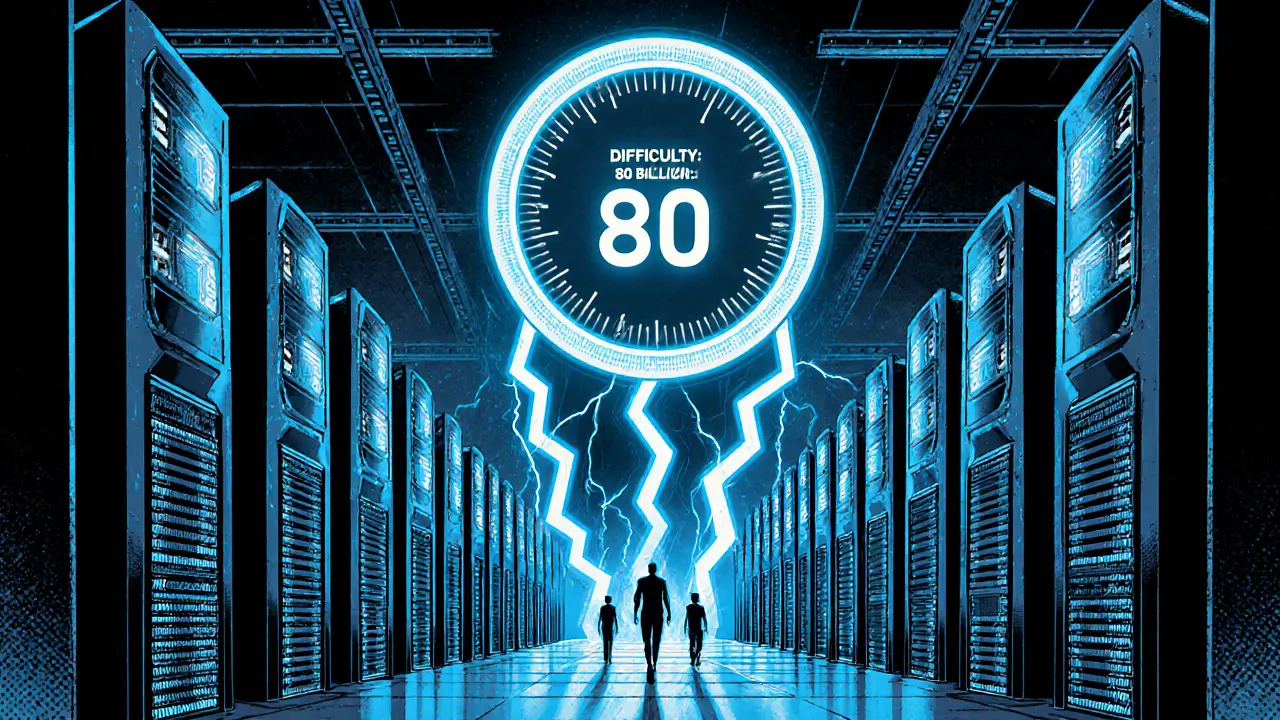
How Difficulty Affects Your Profitability
If you’re mining Bitcoin, difficulty isn’t just a number on a screen-it’s your bank account.When difficulty rises, each unit of hash power (measured in terahashes per second) earns less Bitcoin. That’s called hashprice. Higher difficulty = lower hashprice. Lower difficulty = higher hashprice. It’s a direct inverse relationship.
Let’s say you’re running a small mining rig that uses 3,000 watts of power. Your electricity costs $0.08 per kWh. You’re barely breaking even when difficulty is 50 billion. Then, after the next adjustment, difficulty jumps 15%. Suddenly, your rig is earning 15% less Bitcoin per day. If Bitcoin’s price hasn’t moved, you’re now losing money.
This is why professional miners don’t just buy hardware and plug it in. They model profitability using difficulty forecasts. They track historical trends, hash rate growth, and upcoming Bitcoin halvings. Many keep a 15-20% profit buffer above their electricity costs so they can survive a surprise 20% difficulty spike.
Home miners? They’re the first to feel the squeeze. In July 2021, Bitcoin’s difficulty jumped 27.94% in one adjustment. Thousands of older ASICs-like the Antminer S9-became unprofitable overnight. Many were unplugged. Some were sold for scrap.
How Other Blockchains Handle It
Bitcoin’s two-week adjustment is slow. Other networks took a different approach.Litecoin, for example, adjusts difficulty every 2016 blocks too-but it targets 2.5-minute blocks instead of 10. That means it adjusts four times as often in calendar time.
Ethereum (before it switched to Proof of Stake) used a different system called the “Ethash” difficulty bomb, which gradually increased difficulty over time to push the network toward its transition. It also adjusted every block, using a simple formula based on block timestamps.
Some newer coins adjust difficulty every single block. That’s fast, but risky. If a miner suddenly dumps a ton of hash power into the network, difficulty spikes instantly-and then crashes when they leave. That leads to unstable block times and potential security holes.
Bitcoin’s conservatism is a feature, not a bug. It prioritizes stability over speed. It’s why the network has survived 15 years of hardware revolutions, price crashes, and regulatory crackdowns.
What Drives Difficulty Changes in the Real World
Difficulty doesn’t change in a vacuum. It responds to real-world events.- Hardware upgrades: When new ASICs like the Bitmain Antminer S21 or MicroBT WhatsMiner M56 come out, they’re 30-50% more efficient than last year’s models. More miners buy them → hash rate goes up → difficulty rises.
- Electricity prices: If power costs spike in China or Texas, miners shut down. Hash rate drops. Difficulty follows down.
- Bitcoin price: When BTC surges, mining becomes more profitable. More people jump in. Difficulty climbs. When BTC crashes, miners exit. Difficulty falls.
- Regulation: After China banned mining in 2021, global hash rate dropped 50% in weeks. Difficulty didn’t adjust immediately-it took two full cycles. That gave surviving miners a huge profit window.
These feedback loops are why mining is a game of prediction. You don’t just buy hardware-you bet on the future of difficulty.
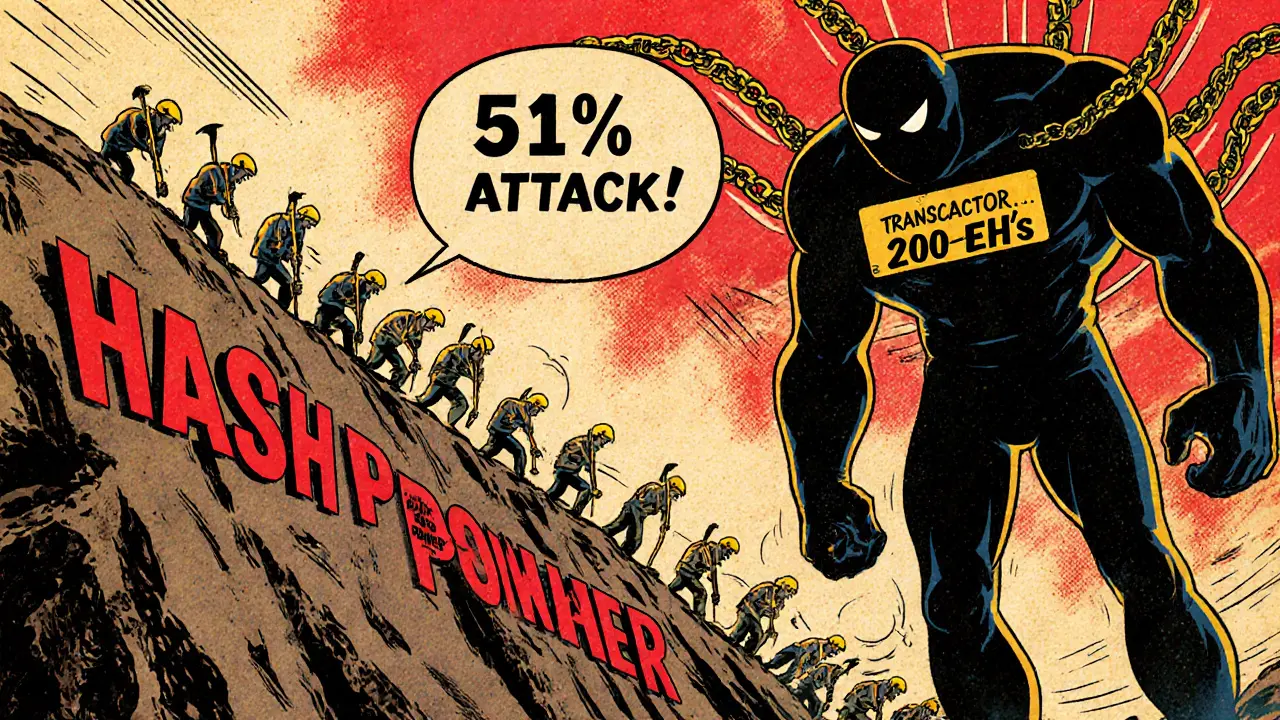
Why Difficulty Matters for Security
The higher the difficulty, the more expensive it is to attack the network.A 51% attack-where someone controls more than half the mining power-could let them reverse transactions or block others. But to do that today, you’d need to control over 200 exahashes of computing power. That’s more than the entire network of most other cryptocurrencies combined. The cost? Billions of dollars in hardware and electricity.
Difficulty makes that impossible for all but the wealthiest state actors. And even then, the economic damage to Bitcoin’s price would likely wipe out their investment.
That’s the real purpose of difficulty: not just to keep block times steady, but to make the network too expensive to break.
What Miners Watch Every Day
Successful miners don’t wait for the adjustment. They track things daily:- Network hash rate: Measured in exahashes per second (EH/s). Currently over 800 EH/s in late 2025.
- Block time trends: Is the average block time creeping below 9.5 minutes? That’s a warning sign.
- Difficulty prediction tools: Sites like Blockchain.com and CoinWarz show projected difficulty changes based on recent hash rate.
- Hashprice: How much Bitcoin you earn per terahash per day. A drop here means it’s time to cut costs or upgrade.
Most mining software does the math for you. But if you don’t understand what’s behind the numbers, you’re flying blind.
What’s Next for Mining Difficulty
Bitcoin’s difficulty has increased over 50 million percent since 2009. That’s not just growth-it’s an industrial revolution.Hardware efficiency is slowing down. We’re approaching the physical limits of silicon. New ASICs still get better, but not by 50% anymore. That means difficulty will keep rising, but at a slower pace.
More institutional miners are entering. They’re not just buying rigs-they’re building entire data centers with renewable energy. That’s making the network more stable, but also more centralized.
Still, the algorithm works. It’s simple, transparent, and self-correcting. No one controls it. No central authority can change it. And that’s why, even after 15 years, Bitcoin still runs on the same code Satoshi wrote.
Understanding mining difficulty isn’t just for miners. It’s for anyone who wants to know how Bitcoin stays alive without a CEO, a board, or a bank.
How often is Bitcoin mining difficulty adjusted?
Bitcoin mining difficulty is adjusted every 2,016 blocks, which takes about two weeks under normal conditions. This happens automatically and is based on how long it took to mine those blocks. If blocks were found faster than 10 minutes on average, difficulty increases. If slower, it decreases.
What happens if mining difficulty drops too low?
If difficulty drops too low, blocks would be mined too quickly-potentially every few minutes. This floods the blockchain with new blocks, increases the risk of chain reorganizations, and makes it easier for attackers to reverse transactions. Bitcoin’s difficulty adjustment includes a 75% maximum drop limit to prevent this from happening suddenly.
Does mining difficulty affect Bitcoin’s price?
Mining difficulty doesn’t directly change Bitcoin’s price, but it influences miner behavior, which can indirectly affect supply and market sentiment. When difficulty rises sharply, unprofitable miners sell their Bitcoin to cover costs, increasing selling pressure. When difficulty drops, miners hold longer, reducing supply. These cycles can contribute to price trends over weeks or months.
Can you mine Bitcoin profitably without adjusting for difficulty?
No. If you ignore difficulty changes, you’ll misjudge your profitability. A miner that was profitable at difficulty 50 billion might lose money at 60 billion-even if Bitcoin’s price stays the same. Successful miners track difficulty trends and adjust their hardware, power sources, or operations accordingly.
Why does Bitcoin use a 2,016-block adjustment instead of daily changes?
A two-week adjustment provides stability. Daily changes would make mining too volatile-miners couldn’t plan investments, hardware purchases, or energy contracts. The slower adjustment also protects against short-term hash rate spikes caused by temporary hardware deployments or malicious attacks. Bitcoin prioritizes long-term security over quick responsiveness.

